Looking for a collaborative coding tool that will work with your remote team? We look at the best collaborative coding tools that will make remote pair programming easier and more productive for you and your team.
If you’re a programmer, you know that collaboration is key to success. And there’s no better way to collaborate than through pair programming. This type of programming allows two or more programmers to work together on the same code, sharing ideas and solving problems as they arise.
When the pandemic began, code collaboration tools lagged behind the polish we’d come to expect from other real-time teamwork apps. But things have come a long way in a short time, and there are more quality options than ever.
These tools will help you communicate and code effectively with your team, no matter where they are in the world. Plus, they’re all free to use!
What Is Remote Pair Programming?
Table of Contents
Before we dive into the best collaborative coding tools, let’s first answer the question: what is remote pair programming?
Pair programming is when two or more developers work together on the same project. They help each other out and learn from each other. This can make the team more cohesive and also help to create a better product.
Remote pair programming is when two or more programmers work together on code remotely. This can be done online using a variety of different tools.
Learn more about how to start pair programming in our pair programming guide.
Benefits of Remote Pair Programming
There are many benefits to remote pair programming, including:
- Increased productivity: Studies have shown that pair programming can increase productivity by as much as 15%.
- Better code quality: When two or more people are working on the same code, there are fewer mistakes and errors.
- Easier problem solving: Two heads are better than one! If you’re stuck on a problem, working with someone else can help you come up with a solution more quickly.
- Better communication: Working closely with someone on code can help improve communication skills and make it easier to give and receive feedback.
What Are Collaborative Coding Tools?
Collaborative coding tools are apps or services that allow programmers to work together on code remotely. These tools offer a variety of features, such as real-time multiplayer editing, audio and video chat, and group debugging.
Several product categories could be described as collaborative coding tools.
- Cloud IDEs: These are online code editors that allow you to write, edit, and debug code in your web browser. They’re great for collaborative coding because they allow multiple people to work on the same code at the same time.
- Local IDEs: These are code editors that you install on your computer. They often offer more features and customization than cloud IDEs, but they tend not to be as convenient for collaborative coding because you have to configure additional tools or share your computer’s screen.
- Code Sharing Tools and Playgrounds: These are websites and apps that allow you to share code snippets with others. They’re great for collaborative coding because they’re simple and easy to use.
There are also adjacent categories like code review tools that support code collaboration workflows. They’re great because they help improve the quality of your code. But we’ll leave apps for managing the meta-work around coding for another piece.
In this article, we’ll look specifically at tools that enable developers to collaborate on code online in real-time.
The Rise of the Cloud-based Development Environment
The lines between these product categories themselves are increasingly blurred.
Microsoft, for instance, has been making major investments in the developer experience of cloud-based developer tooling — and their investment is paying off. That means the capability gap between Visual Studio Code on your local machine and the GitHub Codespaces it can connect to are smaller with every release.
Today, Visual Studio Code users can easily choose to work locally or connect to cloud-based development environments, like GitHub Codespaces.
The resulting experience delivers the responsiveness and configurability of your local development setup with the flexibility and sheer computing power of cloud computing.
Microsoft in particular has invested in making cloud-based development environments a first-class developer experience, with collaboration tools to suit.
So what makes a great collaborative coding tool? While reviewing the products on the market, these are the factors we found to indicate the best experience (and often the most forward-thinking one).
- Multiple communication options (voice, video, text chat).
- A true multiplayer experience. No inherent, opinionated restrictions on the number of collaborators (i.e., not just for pairs) or their ability to interact with the code based on opinionated pair programming workflows (driver/passenger, etc).
- Full access to one’s usual local development environment and tooling. Great collaborative coding tools transcend traditional pair programming limitations and let both participants enjoy the setup they’re already comfortable with.
- A fluid and responsive experience that doesn’t exacerbate the challenges of remote work.
A great collaborative coding tool should help us pair program remotely but offer flexibility for different collaborative use cases. It should aim to be a power tool that solves all your real-time code collaboration needs, not a one-trick pony.
Here are our picks for the best collaborative coding tools.

Live Share is installed as an extension and it works smoothly whether you’re running VS Code for desktop or the VS Code web client.
Live Share allows teams to collaborate on a shared codebase while maintaining the ability of each collaborator to navigate and work independently. While many code collaboration tools have traditionally been bound to the host’s perspective, Live Share allows each person to navigate files and make changes to code on their own terms.
Live Share can share your workspace, terminal, and local servers, and you can communicate over voice from within the tool. This is a polished option with other useful touches, like group debugging and a focus-and-follow feature that allows you to draw the attention of your collaborators. With a price tag of free, this choice is a no-brainer — particularly if you’re already a Visual Studio Code user.
While you’re at it, check out our Visual Studio Code power user’s guide and our VS Code extension recommendations for JavaScript developers.
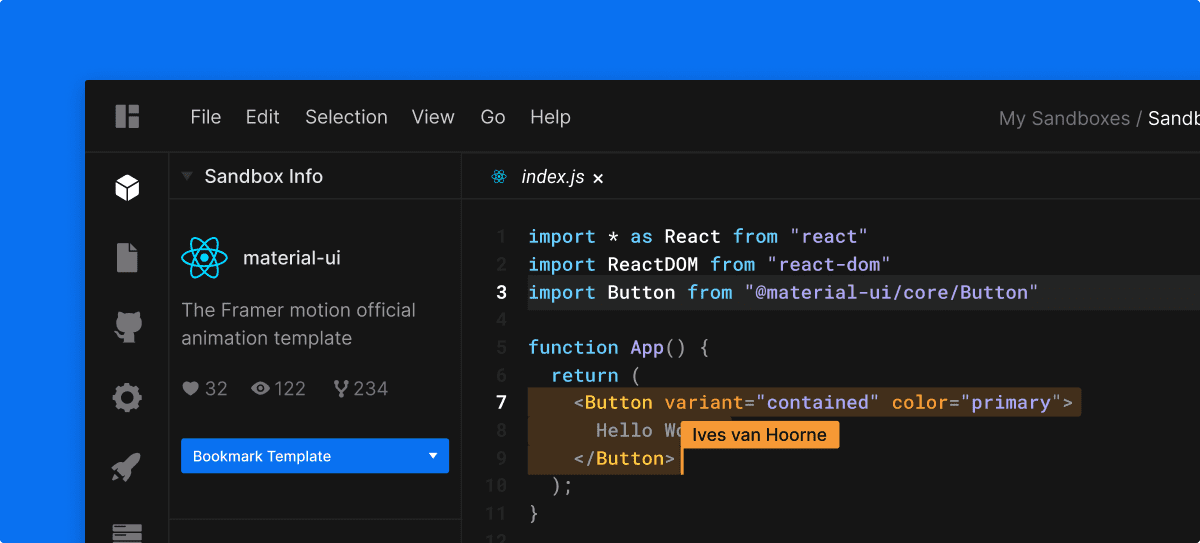
CodeSandbox allows you to collaborate on your sandboxes with its Live feature.
Users can make a sandbox live and share the URL with collaborators. You can determine whether anyone can edit at will, or control who can edit at a given time (classroom mode). File changes, dependency changes, and selections are all kept up-to-date across sessions.
CodeSandbox has a robust free offering, and the $9/month Pro plan provides unlimited private sandboxes and support for private GitHub repos.
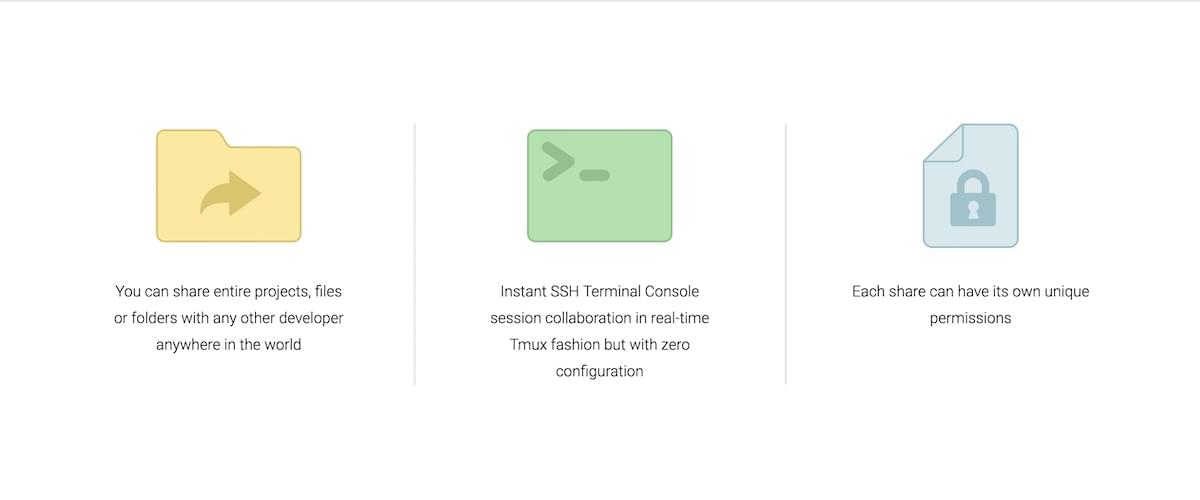
Codeanywhere is a browser-based development environment that aims to help you code from any device without friction — editor, terminal, revision tracking, and other features all included. Codeanywhere has a collaborative focus. For example: instead of having to zip up your project every time you want to share it (without adding someone to your private repo), you can generate a sharing link instantly.
The feature of interest here is Codeanywhere’s live pair programming. Like Live Share or Teletype, this promises a Google Docs style of document editing, with no limit on the number of collaborators. Another handy feature we know from Docs: click on your collaborator’s icon and you’ll be taken to the line they’re working on.
Codeanywhere will cost you anywhere from $2.50/month to $40/month, depending on plan tier and billing frequency.
[embedded content]
CodeTogether is a new contender in the space since the first edition of this article was published, and it is purpose-built to enable remote pair programming.
Most of the tools we’ve explored are built around a single editor, which limits their practicality given that editor choices are often not standardized across a team. CodeTogether is particularly appealing because it is available for Eclipse, VS Code, and IntelliJ-based IDEs. Participants can jump into a browser-based editor regardless of their personal editor preference, so CodeTogether works for a solid cross-section of users.
As with Live Share, CodeTogether participants can move about the project freely. Users can work on their own tasks independently, search across all shared projects, or choose to follow another user’s viewpoint.
Between its editor-agnosticism and collaborative flexibility, CodeTogether now looks like the best option for many real-world teams.
Genuitec has made all CodeTogether features free during the COVID-19 pandemic. Normally, CodeTogether’s free plan permits one-on-one sessions for 45 minutes at a time, while the Premium plan costs $8 and allows up to 16 participants without session time limits. Until that pricing kicks in, there’s little risk in trying this option out.
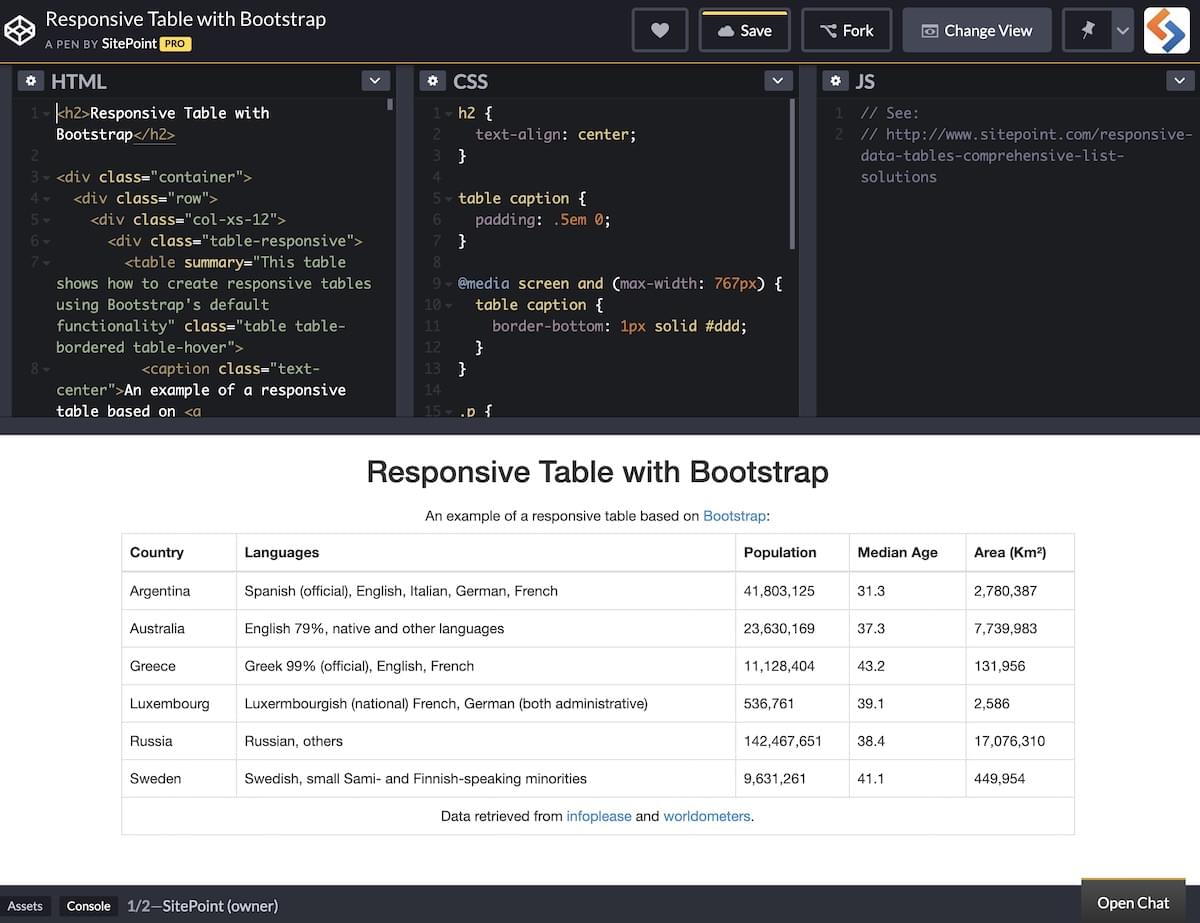
CodePen Pro subscribers can access Collab Mode, allowing multiple users to edit a single pen at the same time. Only the owner of the pen needs to have a Pro subscription for this to work.
Each user’s changes, selections, and settings changes are reflected in Collab Mode, and there’s a live chat area built-in.
The pen’s owner can decide whether to save the changes, and collaborators can fork the results off into their own pens.
While you’re probably not doing your primary development out of a CodePen, this is a great way to run through a troubleshooting session with a friend or coworker, conduct interviews, or collaborate in other ad hoc situations.
CodePen Pro costs anywhere from $8/month to $39/month, depending on plan tier and billing frequency, and places collaborator limits on each of the three tiers: 2 people, 6 people, and 10 people respectively.
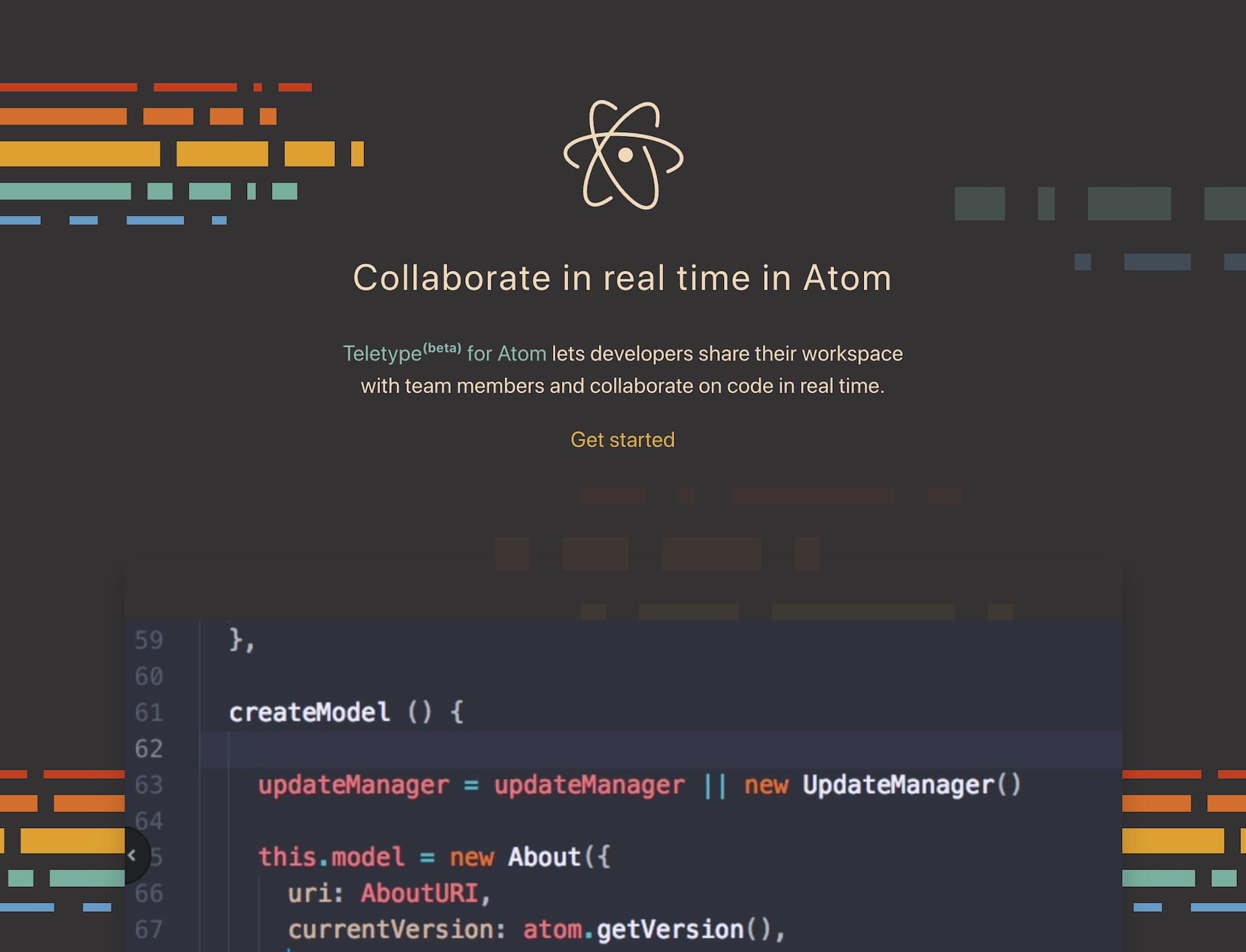
Teletype for Atom, an early entrant among real-time code collaboration tools, allows Atom users to share their workspace with team members.
While Live Share users can move around a project freely, Teletype is a little more host-centric. After the host opens a “portal”, their active tab becomes a shared workspace, and collaborators follow the host as they move between files. Teletype is well-suited to the pair programming use-case — with its driver and navigator model — but not as robust for all purposes as Live Share’s open-ended collaborative development environment.
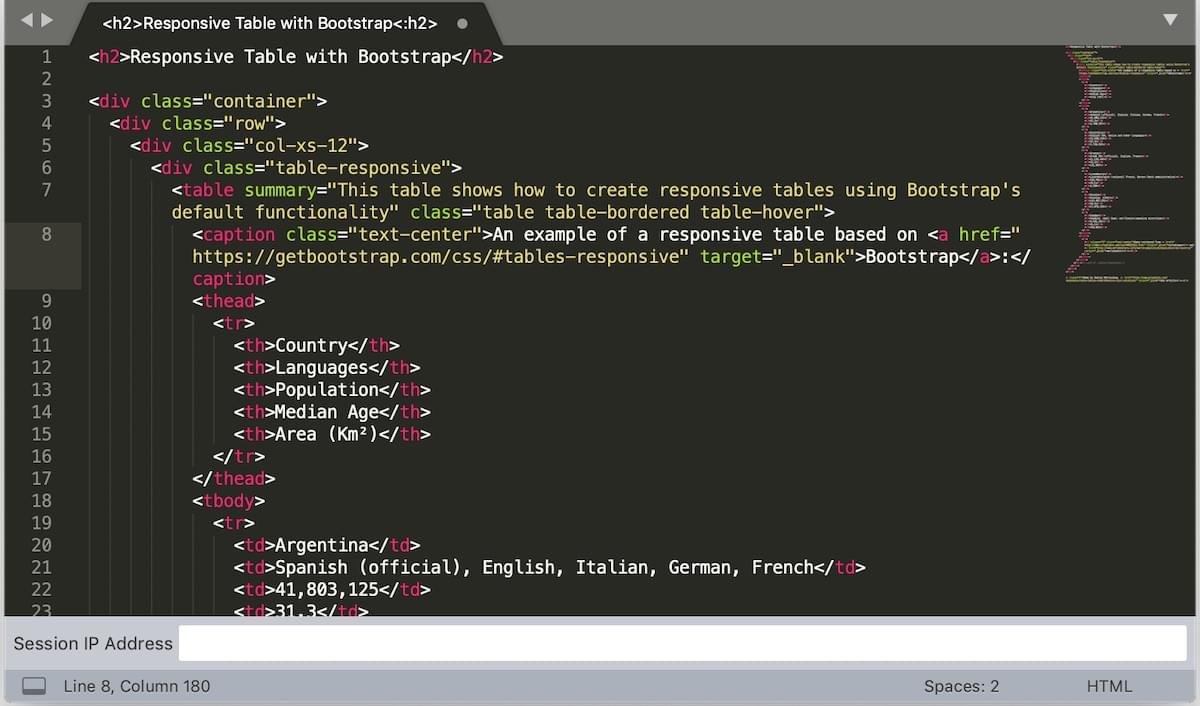
Remote Collab brings virtual pair programming to SublimeText. Remote Collab is a barebones plugin, but if you’re invested in SublimeText it might do the trick for you.
Each session is bound to a particular document. Once the host has begun a session, collaborators just need the host’s IP address to join, and any changes made will be reflected across machines.
Wrapping It Up
It’s a great time to be a remote developer — there are a lot of solid tools out there for collaborating on code. We hope this helped you find the right one for you. If you’re struggling to narrow it down, though, we’d recommend Visual Studio Live Share for those committed to Visual Studio and Visual Studio Code, CodeTogether for mixed editor teams, and CodePen for ad hoc collaboration.
Now you’ve got your toolkit sorted, make sure you’re making the most out of pair programming with our in-depth pair programming guide by M. David Green, development workflow expert and author of Scrum: Novice to Ninja.




